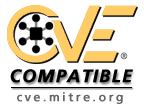Executive Summary
| Informations | |||
|---|---|---|---|
| Name | CVE-2024-43650 | First vendor Publication | 2025-01-09 |
| Vendor | Cve | Last vendor Modification | 2025-01-09 |
Security-Database Scoring CVSS v3
| Cvss vector : N/A | |||
|---|---|---|---|
| Overall CVSS Score | NA | ||
| Base Score | NA | Environmental Score | NA |
| impact SubScore | NA | Temporal Score | NA |
| Exploitabality Sub Score | NA | ||
| Calculate full CVSS 3.0 Vectors scores | |||
Security-Database Scoring CVSS v2
| Cvss vector : | |||
|---|---|---|---|
| Cvss Base Score | N/A | Attack Range | N/A |
| Cvss Impact Score | N/A | Attack Complexity | N/A |
| Cvss Expoit Score | N/A | Authentication | N/A |
| Calculate full CVSS 2.0 Vectors scores | |||
Detail
| Improper Neutralization of Special Elements used in a Command ('Command Injection') vulnerability in Iocharger firmware for AC models allows OS Command Injection as root This issue affects firmware versions before 24120701. Likelihood: Moderate – The Impact: Critical – The attacker has full control over the charging station as the root user, and can arbitrarily add, modify and delete files and services. CVSS clarification: The attack can be executed over any network connection serving the web interface (AV:N). There are no additional measures that need to be circumvented (AC:L) or attack preconditions (AT:N). THe attack is privileged, but the level does not matter (PR:L) and does not require user interaction (UI:N). Attack leads to full system compromised (VC:H/VI:H/VA:H) and compromised devices can be used to "pivot" to other networks that should be unreachable (SC:L/SI:L/SA:H). Because this an EV charger using high power, there is a potential safety impact (S:P). The attack can be automated (AU:Y). |
Original Source
| Url : http://cve.mitre.org/cgi-bin/cvename.cgi?name=CVE-2024-43650 |
Sources (Detail)
| Source | Url |
|---|
Alert History
| Date | Informations |
|---|---|
| 2025-01-09 13:20:28 |
|





